Ahmedabad: Within the bright green, picturesque campus of Ahmedabad’s Physical Research Laboratory lies a pitch-dark room full of equipment where the lights can never be turned on. This lab’s groundbreaking research challenged human evolutionary history in 2018. PRL scientists are also using the same cutting-edge techniques in palaeosciences to prepare the country for a violent future brought on by the climate crisis.
To study the future, PRL is looking at the past. In several highly specialised labs here, experts of biogeochemistry and geology perform radiocarbon dating and analyse elements and isotopes to recreate the ancient environment of India and forecast what’s to come. They achieve seemingly impossible feats, like putting an age to water or testing standard understandings of human evolution.
“People previously used conventional techniques to study resources like groundwater. But we use more cutting-edge techniques to obtain granular details around various systems and map them out to manage them for the future,” said Amzad Hussain Laskar, assistant professor of geosciences.
At PRL, the scientists have also been contributing to the study of archaeological artefacts and human evolution.
For decades, anthropologists widely believed humans migrated out of Africa in multiple waves and settled all over the world, beginning around 125,000 years ago. But in 2018, a discovery from the dark Luminescence lab of the PRL threw this theory out of whack. After years of research, the scientists showed that hominins—ancient human cousins—crafted tools in India 385,000 years ago, much earlier than previously thought.
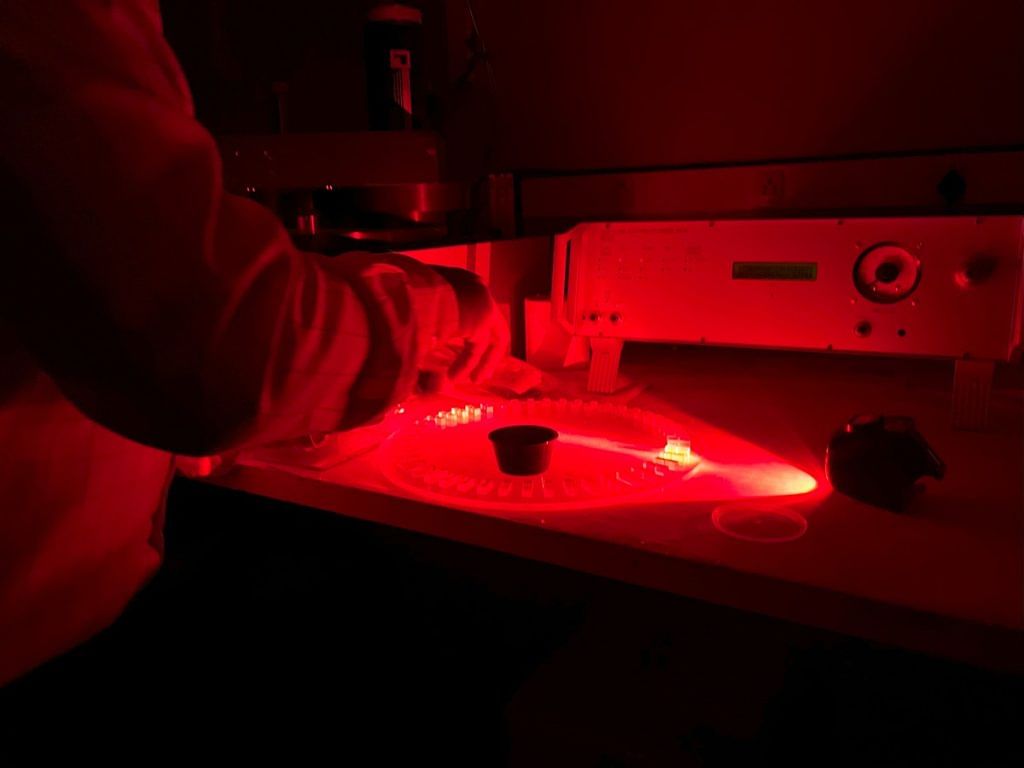
Stone tools unearthed from the Attirampakkam archaeological site north of Chennai were dated in the Luminescence lab by analysing the light emitted from electrons trapped within the prehistoric artefacts for millennia.
“This is the one of the oldest and most sophisticated labs in India,” said Dr Naveen Chauhan, associate professor at the Atomic, Molecular, and Optical Physics Division. “We can calculate the age of even a single grain of sand, about 100 microns (in size). We are working at an international level with the best in the world.”
PRL is an autonomous unit of the central government’s Department of Space, but its scope also includes the physical and temporal expanse of Earth, hidden in flakes of soil, chips of rock, and ancient ice.
The young researchers in the sprawling campus in Ahmedabad work at the heart of Indian science. They move easily between buildings and specialisations, from a space lab studying asteroid samples to an archaeology lab studying Indus Valley remains to a climate lab with Antarctic ice core samples—an experience rarely possible anywhere in the world, let alone India.
The Luminescence, Radiocarbon Dating, and Stable Isotopes labs all conduct research at an atomic and molecular level to understand the nooks and crannies of India’s natural past and inevitable future.
Also Read: Mount Abu observatory is India’s eye on the sky. It’s hunting for Earth’s distant cousins
‘Sparks’ from sediments
A surprising discovery shook up long-held assumptions about human history in February 2018: 7,000 or so tools found at Tamil Nadu’s Attirampakkam were proven to be made nearly 250,000 years before the stone tool technique was presumed to have arrived in India.
This remarkable finding, published in the international journal Nature, was the result of a joint effort by the Sharma Centre of Heritage Education, PRL Ahmedabad, and other institutions. The researchers argued that this evidence pointed to possible earlier migrations of hominins to India, perhaps even before the evolution of Homo sapiens in Africa.
While the archaeological site itself was discovered in the late 1800s and suspected to be as much as a million years old, the tools in question were gathered over the previous 20 years or so.
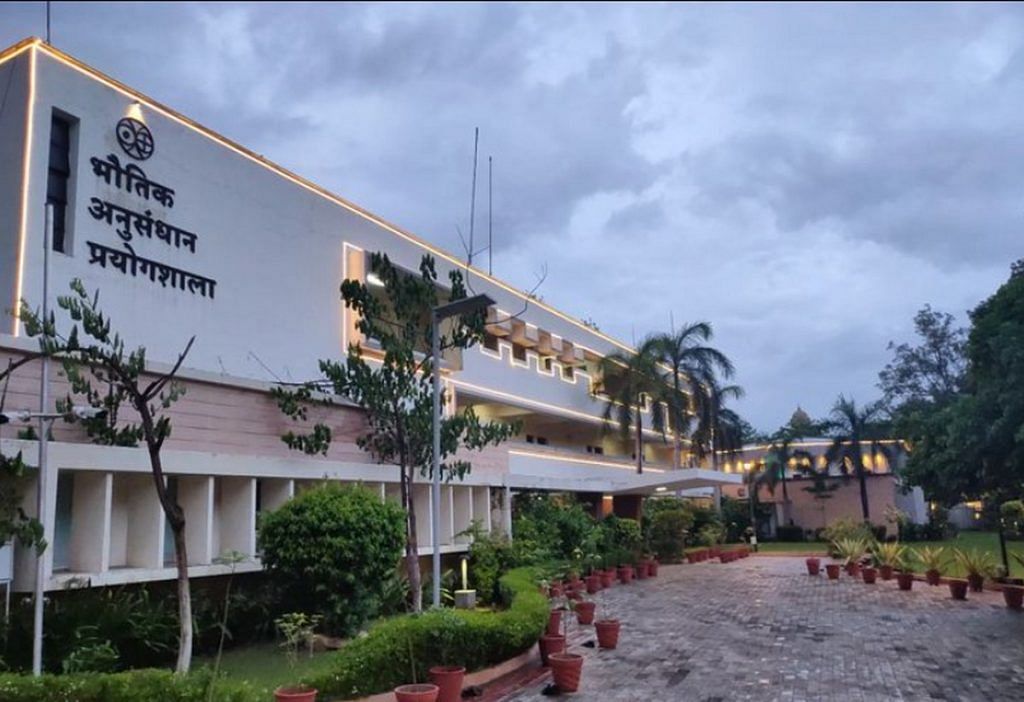
Radiocarbon dating, which can only go back 50,000 years, was insufficient to confirm hypotheses about their age. Therefore, the researchers turned to a newer method—luminescence dating. This entailed analysing sparks of light emitted by electrons trapped in rocks and sediments thousands of years ago, revealing their last exposure to high temperatures.
This task was undertaken by the PRL scientists at the Luminescence lab, whose highly sensitive and powerful instruments can measure objects up to a million years old.
Archaeo-paleo-sciences help us learn about past human activity and connect them with modern humans and how we evolved
-Anil Bhardwaj, PRL director
“We do physics, working with minute details in atomic structures and energy stored in electrons. And since lifetimes (of isotopes that are studied) here are in billions of years, we work in geology also. That’s the intersection point of our lab,” explained Chauhan.
Making meaning out of findings in such contexts, however, is an interdisciplinary effort. At Attirampakkam, the team’s staggering find was that later tools were of a distinctive technology believed to have arrived in India only 200 millennia later. Which hominin species made these tools, however, remains unknown due to the absence of bones at the site.
“Our dating and isotopic techniques lead us to understand the process of formation of places where these samples came from. Archaeo-paleo-sciences help us learn about past human activity and connect them with modern humans and how we evolved,” said PRL director Anil Bhardwaj.
But dating the tools is just a sliver of the Luminescence lab’s work. It operates in tandem with the neighbouring Radiocarbon Dating lab and Stable Isotopes lab—all of which conduct research at an atomic and molecular level—to understand the nooks and crannies of India’s natural past and inevitable future.
In 2019, the same team worked with IIT researchers and found “unequivocal evidence” that the seasonal Ghaggar river was once the perennial Saraswati along which early Harappan settlements thrived.
Shedding light in the dark
To study luminescence, or the emission of light, scientists must work in complete darkness. Chauhan and his colleagues navigate the Luminescence lab with dim red flashlights, used only when necessary and permitted. Even the glow of a phone screen can interfere with the sensitive equipment. The instruments, barely visible in the dark, are loaded with slides containing mere milligrams of samples for study.
To date these samples, the scientists subject them to heat, light, or infrared energy.
Soil and sediment comprise trace amounts of radioactive elements like uranium and thorium, which constantly produce low doses of ionising radiation (that can remove electrons from atoms). When these minerals are exposed to heat or light, they absorb the energy, resulting in highly excited electrons.
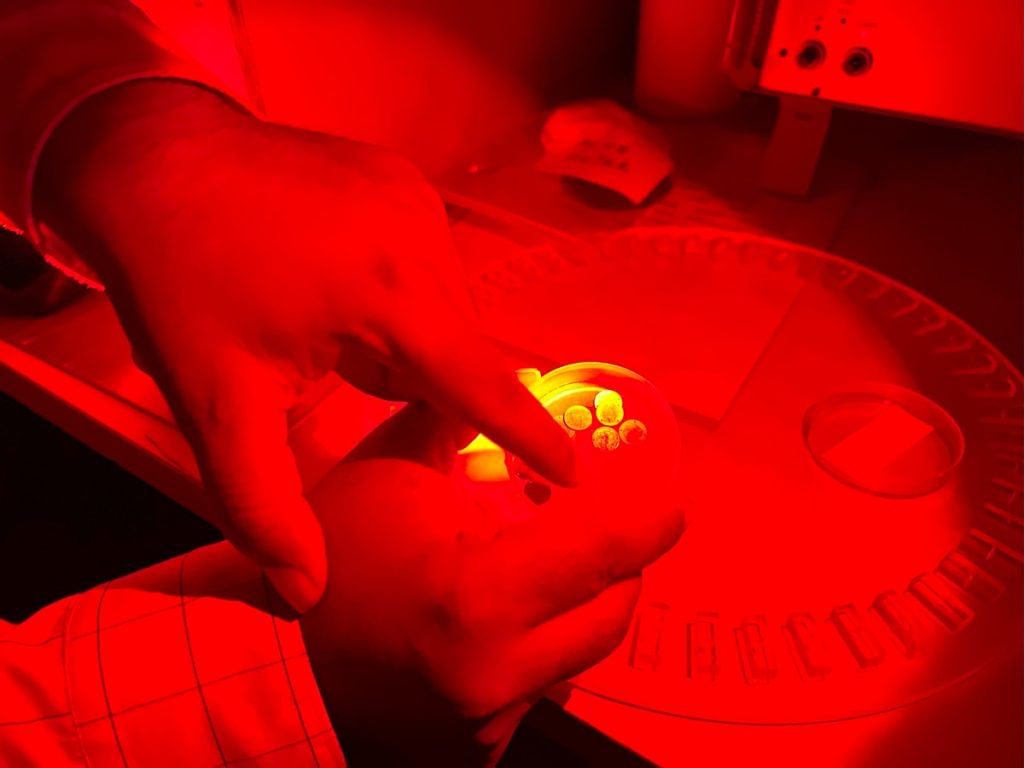
While most electrons promptly emit light and settle into a stable state, some charged electrons get trapped in deformities in the mineral structure. They are said to be in a ‘metastable’ state, which can last for a very long time. That’s until the scientists stimulate them, causing the electrons to emit a ‘luminescence signal’. The amount of light emitted depends on how long the electrons have been trapped.
We can calculate the age of even a single grain of sand, about 100 microns (in size). We are working at an international level with the best in the world
-Dr Naveen Chauhan, associate professor
“The lifetime of these metastable states can vary from a few years to a billion. That is the most interesting part. The youngest sample we’ve dated is six years old, and the oldest almost 0.4 million years old,” said Chauhan, referring to the Attirampakkam stone tools. “We can go even older—we are targeting one million years.”
Luminescence dating allows scientists to calculate not the birth age of a piece of rock, but the last time it was “reset” — exposed to enough energy and electromagnetic radiation to excite and trap electrons. In other words, it can determine when a rock or soil sample was last exposed to sunlight before getting buried.
Much of the team’s work involves dating soil and sediments to study natural climate phenomena. They have been recreating paths of rivers by dating sediments, calculating the rate of retreat of glaciers by studying layers of sediment or moraine pushed out by growing ice, and researching the evolution of deserts like the Thar. They also determine when underground magma cooled to form rock and date meteorites by when they fell and were charred by the atmosphere
“We can apply it to even seismic studies, where grains can be dated back to the previous major earthquake where rubbing of material in the earth’s crust took place, causing it to heat up,” said Chauhan. “We can always date back to the last reset event.”
Set up in 1977, the PRL Luminescence lab is the first of its kind in India and a global leader in the field. In 2019, the same team worked with IIT researchers and found “unequivocal evidence” that the seasonal Ghaggar river was once the perennial Saraswati along which early Harappan settlements thrived. This was done by dating grains of sediment by both luminescence and radiocarbon methods.
PRL’s radiocarbon dating lab is the only facility worldwide capable of handling high-altitude paleo-gas samples.
Learning about the old with the new
Next door to the dark room, the Radiocarbon Dating Laboratory is a well-lit space filled with intricate glass tubes and vials where gases and liquids circulate in ongoing experiments. But, in contrast to this futuristic sight, the counters are stacked with ancient samples—archaeological artifacts, cave sediments, bones, marine fossils, plant remnants, charcoal, and more.
Established in the 1970s, the main mandate of this lab is to study the remaining fragments of the Indus Valley Civilisation, but it has since gone way beyond that.
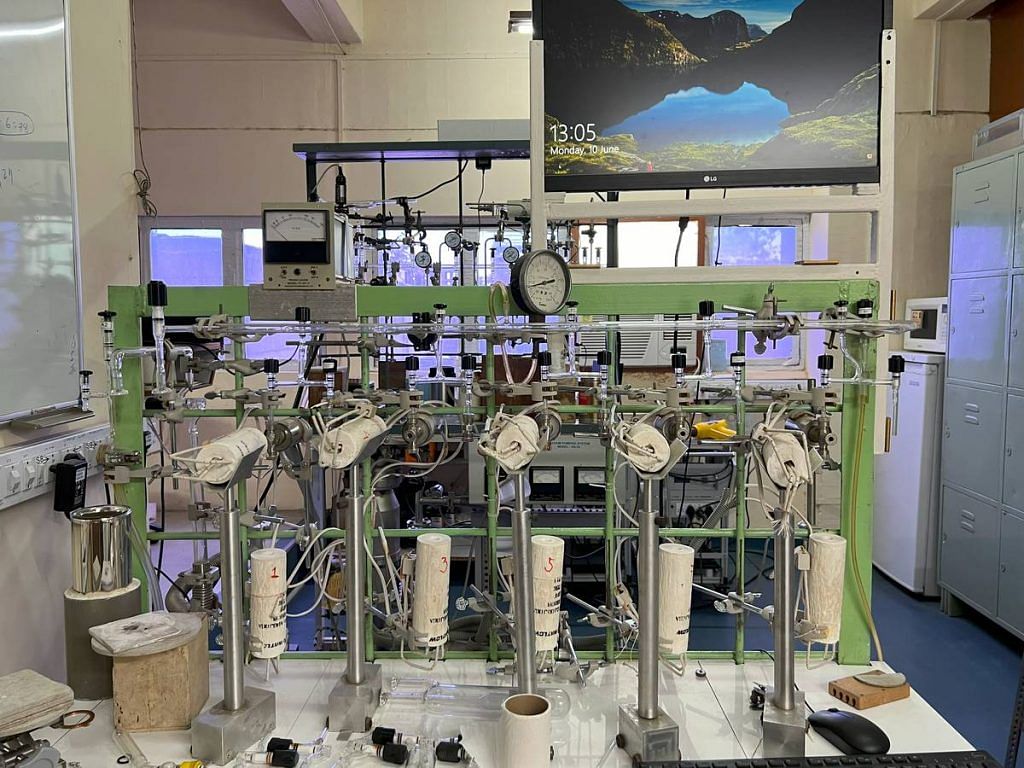
The standard radiocarbon dating technique measures the proportion of Carbon-14 (C-14) in organic material—the lesser there is, the older it is. By 50,000 years, nearly 99 per cent of C-14 has decayed, making radiocarbon dating ineffective. Unlike luminescence dating, which is done on sedimentary crystals, radiocarbon dating can be performed on gases, liquids, life forms, and anywhere carbon is present.
“Initially, our focus was archaeology, but we also focus on three other major aspects with our advanced techniques,” said geosciences professor Laskar. “We study groundwater dynamics, a major issue in India. We also study carbon dynamics in soil and identify pathways of carbon loss. Thirdly, we study paleoclimate and analyse ancient samples along with our collaborators all over India.”
For paleoclimate studies, particularly in the Arctic, Antarctica, and Himalayas, the team analyses methane and other gas samples collected from icy depths. PRL’s radiocarbon dating lab is the only facility worldwide capable of handling high-altitude paleo-gas samples.
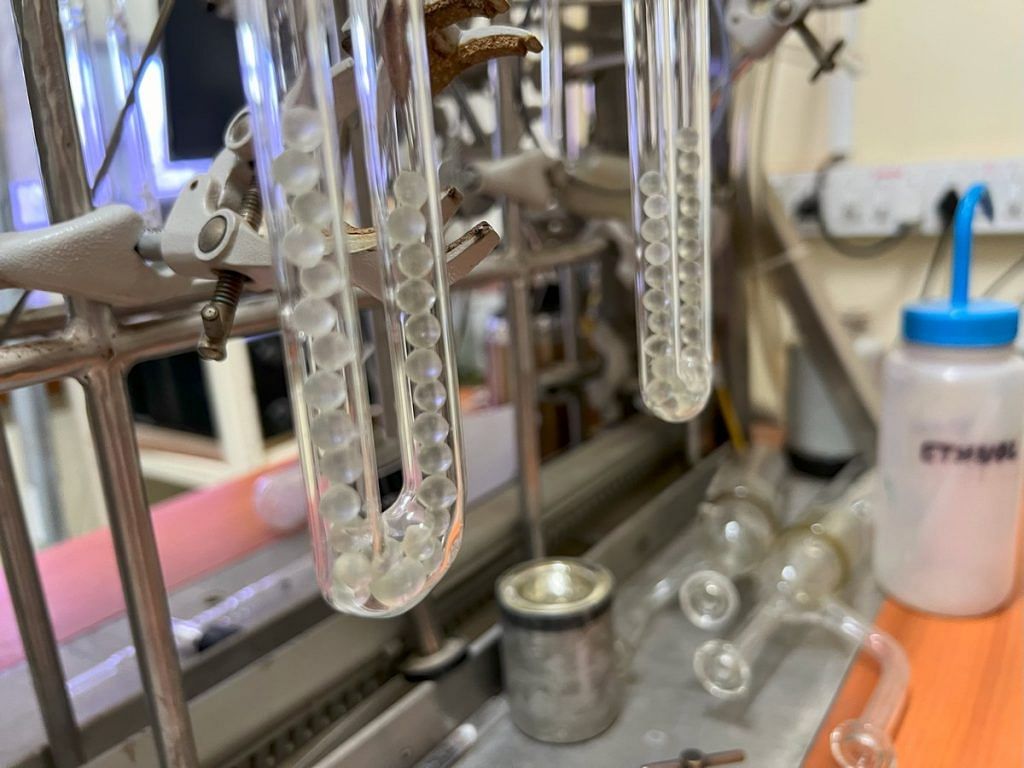
The team recreates past environmental conditions, or paleoclimate, through data, calculating ancient ocean conditions, monsoon patterns from millions of years ago, and other environmental details associated with climatic conditions. This work primarily involves dating samples through various methods available at PRL.
“For groundwater, we date it, study the age of the water, the interactions of groundwater with surface water, and identify recharge and vulnerable zones,” said Laskar. “For carbon dynamics in soil, we focus on high-altitude cold conditions where ice has trapped carbon dioxide thousands of years ago and is currently thawing. We have techniques to determine the origin and conditions of carbon that is getting released into the atmosphere.”
The technology for dating and studying paleo samples has grown tremendously over the last couple of decades, becoming more cutting-edge than ever. Along with the radiocarbon lab, the Stable Isotopes lab uses newer and rarer isotopes measurements.
Also Read: Ahmedabad moon lab is waiting for Chandrayaan-4 samples. It has already studied Apollo rocks
Forecasting the future
The stable isotopes lab is putting together a complex puzzle. By combining clues from paleoclimate, paleoenvironment, anthropology, and archaeology, scientists here, in collaboration with other PRL labs, are building a clearer picture of how hominids lived before Homo sapiens dominated the planet— from climate and weather patterns and how rivers flowed to how plants grew and what animals were hunted in which season, and more.
At the core of this research are elements like carbon, nitrogen, oxygen, hydrogen, and sulphur. These are essential for life and form the basis of most biogeochemical processes on Earth. The lab uses isotope measurements to calculate the rates of these processes to reconstruct past conditions as well as to model future trends.
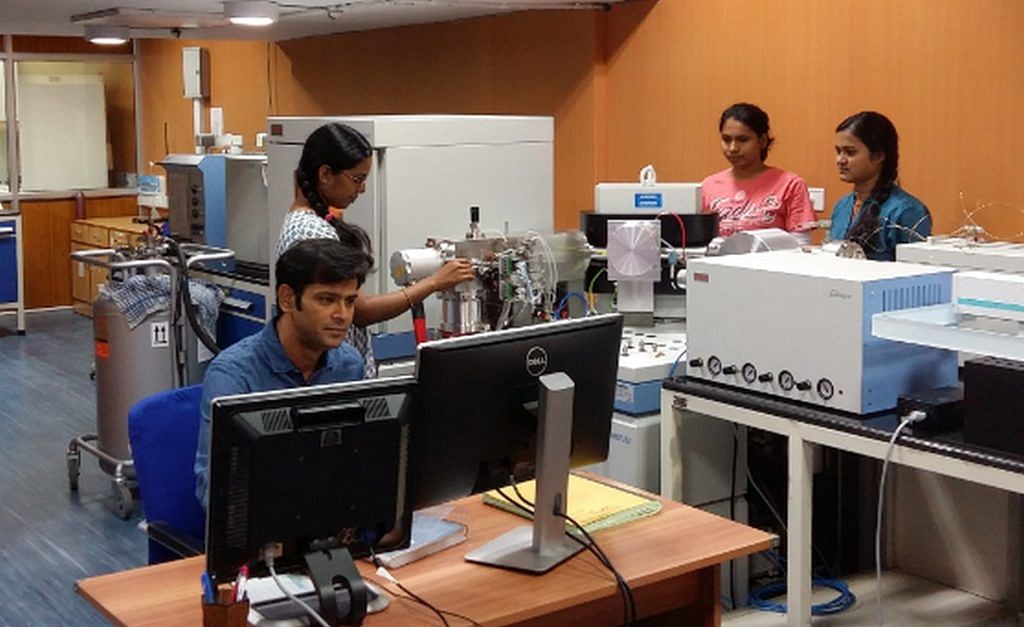
“We focus on environmental climate change through biogeochemistry at PRL, and on elements important for life like carbon, nitrogen, hydrogen, and oxygen—which are also important ecologically and climatologically,” said Sanjeev Kumar, head of PRL’s Geosciences Division. “Where we are different from other labs is that we measure the rates of processes of how these elements move through the environment.”
The teams here study the ocean, soil, deserts, water bodies, atmosphere, ice core samples, plant matter, and more to understand how these elements move in nature, recreate paleoclimate, learn how past environments affected biogeochemistry, and predict the future of the subcontinent in the face of rapid atmospheric and oceanic heating.
Climate sciences are a major focus area. The scientists are conducting studies on rivers and water bodies throughout India, the organic components and moisture of soil, melting permafrost both at the poles and the Himalayas, nitrogen fixation and its cycle in high-altitude agriculture, as well as the rate and age of methane and carbon dioxide emissions from paleo microbes being exposed due to melting permafrost.
Students have collected lake water samples and are now studying what will happen to the carbon and nitrogen cycle when this ice melts on a large scale in the future
-Sanjeev Kumar, head of PRL’s Geosciences Division
“Recently, we took a core sample from Wular Lake in Kashmir dating back 4,000 years. We extracted black carbon (soot) from them as they don’t decompose fast. The concentration and isotopic composition of this black carbon then help us date past fire events and identify the sources,” said Sanjeev Kumar, head of PRL’s Geosciences Division.
This also helps trace human migration and behaviour in the region, Kumar added, as human settlements typically involve burning forests for agriculture or cooking, releasing soot
Water bodies are a perennial subject of study. At the Mahanadi River, the team took multiple readings for nine days at high and low tides to understand river dynamics in estuaries and carbon cycles at a hyperlocal scale.
At Sunderbans and Hooghly — two regions located close to each other — the team is working on understanding why similar systems in similar geographical locations are different elementally.
The icy Himalayan region is another main focus, from the weathering of Himalayan rivers and their future path changes, the downstream ecosystem effects of damming or artificial riverfronts, carbon dynamics in the soil in the newly thawing Himalayan permafrost, and how Himalayan forests uptake carbon and nitrogen.
Studying natural processes related to climate in India and abroad enables PRL to provide vulnerability assessments and policy inputs to the government.
At a time when Himalayan glaciers are melting at an unprecedented rate, posing severe threats to downstream communities, the findings coming out of labs like PRL’s are crucial for how the country will tackle the devastating effects of climate change.
“We are collaborating with the Ministry of Earth Sciences’ National Centre for Polar and Ocean Research (NCPOR) to study Arctic fjords and Antarctic lakes,” said Kumar. “Students have collected lake water samples and are now studying what will happen to the carbon and nitrogen cycle when this ice melts on a large scale in the future.”
(Edited by Asavari Singh)



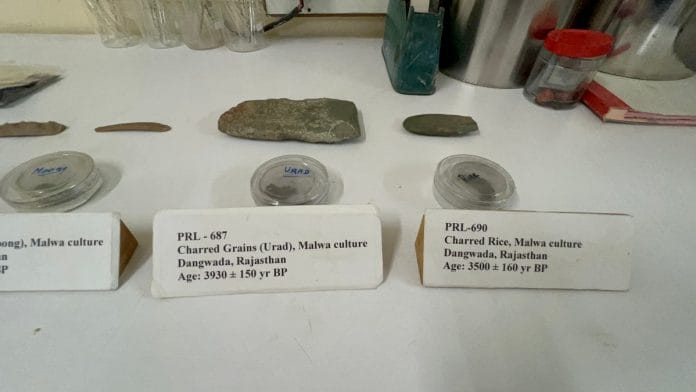



Even with this advanced technique, one would know at best the age of the rock used for a stone age tool, not the time when the tool was chiseled to its shape & used. The two events could be widely apart in timeline.
Am I missing something?